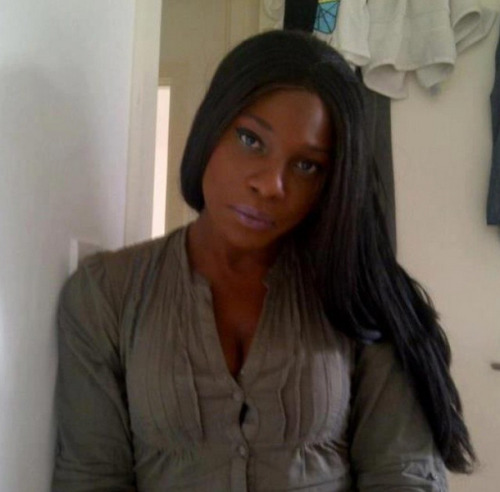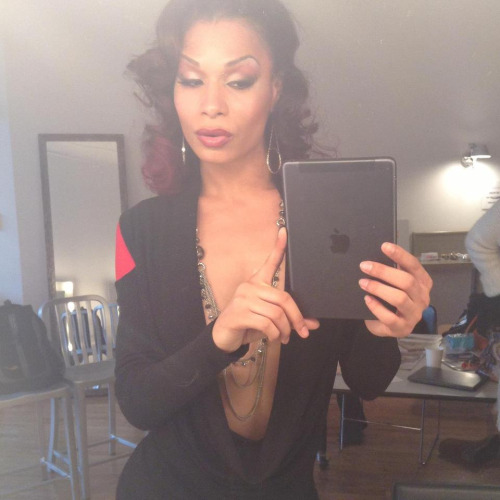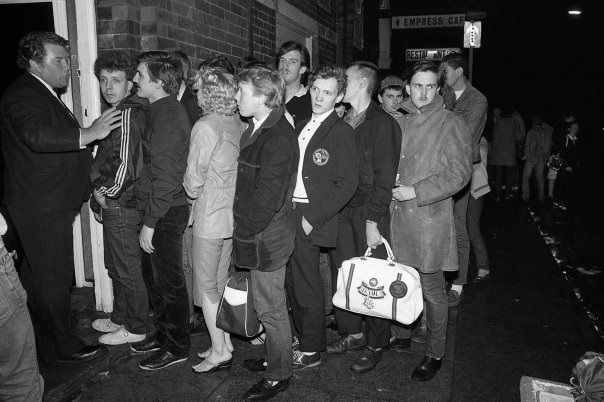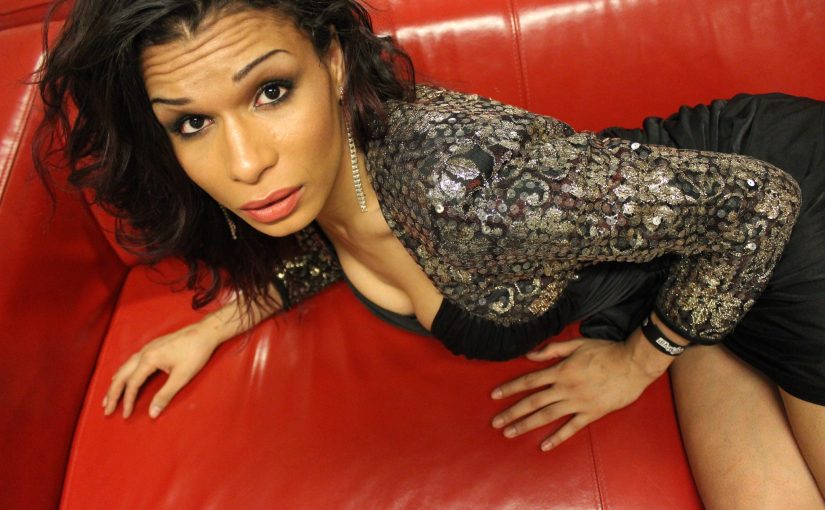I’ve always said that being gay is one thing, but whenyou’re a biologically born male or female who legitimately feels as if you’vebeen born in the wrong body – that’s a whole other story. It involves so muchmore than just merely ‘coming out’ and having a bit of surgery. Imagine feeling trapped inside a body you don’t identify with, having to deal with the fact that you’ll be rejected from more than one avenue, just because you know you’re supposed to exist in a different way. According to a GIRES report issued in 2009, around 10,000 people in the UK identify as transgender with only 6,000 undergoing the full surgery – and we’re now in 2014…
In the not-so-glory days of the 1950s when everything was either an experiment or people were involuntarily inhaling cancerous fumes, numerous studies were taken to define the ‘act of switching gender roles’ both physically and mentally, this meant putting ‘subjects’ (God forbid we think of them as humans) to some pretty degrading tests. However, on the upside, there were a whole leap of amazing breakthroughs including developments in hormone replacement therapy and gender reassignment surgery – Christine Jorgensen being the first widely known MTF (male-to-female) transgender to under-go the operation. We have Sexologist Harry Benjamin to thank for the word ‘Transsexualism’ which was actually an umbrella term for those who are one gender – yet identify with the opposite; that includes everyone from cross-dressers to drag queens. Let’s not beat about the bush – being transgender has nothing to do with dressing as a woman for sexual or entertainment purposes.
I’ve always admired people of trans experience – the abuse that they’ve had to endure and the bravery it’s taken to stand up to that. With hate coming from every angle, even from the same people that make up the LGBT community, it can be extremely hard to not feel like every door is closed to you. With that being said, the trans community has raised a strong middle finger to any of those who have ever tried to push them into a box, and conquered hurdles that some of us simpletons would run straight into at first try. Isis King is probably one of the most memorable contestants from ANTM, making such an impression that Tyra paid for her gender reassignment surgery. Fellow New York girl Carmen Carrera is penned to be the next Victoria Secret model. And who can forget BB5’s Winner, Nadia Alamda and her “I need cigarettes” outburst? The trans community are breaking out of the constraints of emotional and political oppression, eagerly campaigning for the total freedom of their peers and actively seeking to be accepted for who they are – human beings.
Perhaps it’s only in places other than our own shores do we find those free enough to share their experiences, opportunity had it that I would cross paths with two very brave woman who were willing to share their stories with me. Their journeys are different – but equally as amazing. Meet Eden Imagica and Leiomy Maldonado, both born male and finding their places in the world as women…
Eden

I had been asked to write a little about my journey from a gender non-conforming male, to my womanhood – and it’s been just that! It’s been a journey of deep moments of introspection and a new found appreciation for life and people.
I remember trying to explain to my African parents that I had been living abroad with my white Portuguese boyfriend for three years. I came out as gay at 23 to my parents, I remember my mother asking how it felt having sex, I replied “Uncomfortable…but?” What I really wanted to say was that it was uncomfortable, but it was the only place to put it!
Don’t get me wrong, I didn’t grow up feeling victimized by my family for being gay. Everyone in my family acknowledged I was always different!
I decided to transition three years ago, but it was always inevitable. When I was growing up I always treated by friends and family pretty much as they would a female (or a very gentle boy). As an adult I couldn’t command attention in the workplace and I still looked like a teenager.
The decision was an easy one, I couldn’t continue to live my life being mistaken for a girl. I’ve lost count the amount of times I’ve run from those ‘hood’ boys as they got closer to inspect what they thought was a girl/tomboy, then wait for their horrible reaction when on closer inspection they realized I was a boy. It only became logical to me when the opportunity presented itself in the form of a group of transgendered friends I had met.
Living as a female for me in particular has been far easier, practical and logical in my day to day.
After around a year on hormone therapy, I began to notice some substantial physical changes. Skin thinning, I was bruising easily, softer muscles and repositioned body fat. Fortunately for me I was pre-warned about the emotional consequences of reducing testosterone. It is emotionally an awful process for an MTF, I kind of think in this instance our FTM counterparts have an advantage. Testosterone is man’s Prozac – NO JOKE. I don’t think I’ve emotionally experienced any more or any less than any other transgender female, I do think that it’s imperative that people know that emotionally their going to feel like absolute shit when they begin HRT.
I’m eagerly awaiting my post-operative life as a woman.
Leiomy Maldonado

I was born on April 28th, 1987 in the Bronx, New York City. I never really had a normal childhood, When I was around 7/8 my dad was diagnosed with HIV so I had to take care of him, we eventually moved in with my grandma but I still had to take care of him.
My days would generally consist of going to school and coming straight home to care for my dad, he wasn’t the most loving person either and my femininity really bothered him. I always felt, since the age of 5/6, that I was different; but I wasn’t sure exactly what it was. Growing, up I was always called gay or a homo, so eventually that’s what I thought I was. I remember telling my family that I was attracted to guys around the age of 15 and I began to cry; not because I was telling my family how I felt, but because I didn’t feel gay – I felt like a girl. That same year I met Tiana, who was transgender and that’s when I began realizing that I wasn’t gay, and instead was transgender. It wasn’t until the year after that I started living my life as Leiomy at the age of the 16.
I started throughout the summer at my Aunt Sylvia’s house and she was very supportive. I wasn’t aware of hormones yet, so I just wore women’s clothing given to me by a neighbour. After that summer I went back to living with my grandma, she wasn’t aware that I had begun transitioning. She was shocked to see me in clothes so tight and wearing a bra and thought it was a phase and I’d eventually get over it. I went back to High School to start my second year, and I went back as a woman. I dealt with a lot of verbal abuse and got into plenty of fights and was eventually kicked out of school. I didn’t actually begin taking hormones until I was 19 when I was given hormone pills from an older transwoman I met. After a few weeks of taking the hormones, I started seeing changes in my face and my chest was beginning to become sore as I developed breasts. I felt even more complete every day and the hormones made me more serene and calm. However, I started to notice that whenever I didn’t take my hormones, I would be extremely moody.
Living at home wasn’t the easiest task either, my eldest brother stopped talking to me and my older brother would always call me names, so I would attack him physically. I can say that between my dad, my grandma and my second oldest brother I was verbally abused often and when I’d get into an argument with my grandma, she would scratch my face knowing that I was always looking at myself in the mirror and she would kick me out at times. It got to a point where I couldn’t take it anymore so I left home and began living with a friend. I began competing in the underground Ballroom Scene Voguing, which is a style of dance, and I found that it was a great way to relieve stress. I eventually went go back to my grandma’s house, but after a few weeks I’d be kicked out and at my friend’s house.
After a few years I eventually got on America’s Best Dance Crew along with some friends (Vogue Evolution) to compete against other crews on MTV and that’s when my family really began to see what my life was about and what I had been up to. It also helped them understand and realise that I am a woman from the inside and out. About a year after that I received a call to be a part of Willow Smith’s Whip My Hair video which was amazing to shoot and lots of fun. The love I received on set was epic, and meeting the Smith family is something I’ll never forget. I’ve been able to travel the world and go to places to share my talent and also teach classes as well. I’ve been to London, Hong Kong, Jamaica, Sweden, Austria, France, Switzerland and Germany. This past year I was yet in another video, this time for Icona Pop’s All Night video. My most recent accomplishment has been performing at the Museum of Modern Art where I showcased Voguing and talked about where it came from.
I can honestly say throughout my transition I haven’t had many transwomen who I can say have helped guide me that much. However my gay Mother Tyhierry, who’s a gay male, has actually helped and guided me to become the woman I am today. He’s introduced me to his trans friends whom have given me tips on hormones and surgeries. Being a part of the ballroom scene, the transwomen are subjected to getting silicone butt injections and I often see they’ve rushed through their transition. I have yet to undergo any surgeries due to not having the funds, but I want to have my sex reassignment surgery along with facial feminization surgery ASAP.
My love life sucks though, it’s hard to find a man who is comfortable enough to be with a woman of trans experience without worrying about what society thinks of him. I want to eventually be married and adopt kids as well. I feel that if the world would separate trans from LGBT it would help people understand what being trans is. LGB stands for lesbian, gay and bisexual which all fall under sexual orientation where the T for transgender is about gender identity, which is a totally different ballgame. People of trans experience deal with a lot even from the LGB community. Were often mis-gendered and disrespected within the community and often misunderstood.
I want to be able to wake up and feel 100% complete just for myself. Being loved and respected as an open transwoman has been amazing so far, and I feel like my confidence brings hope to younger trans people all over the world and that’s what keeps me motivated.








